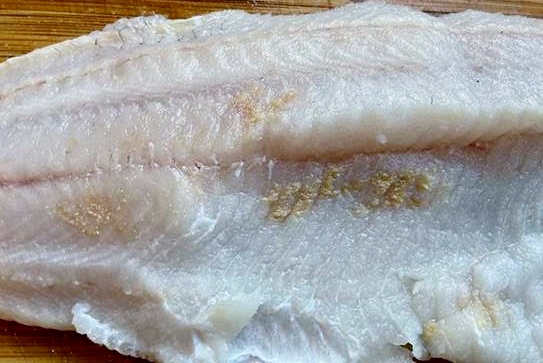CPW Alerts Anglers of Rare ‘Sandy Flesh’ Disease Found in a Walleye at Lake Pueblo - Avoid Consumption

Description: CPW alerts anglers of rare "Sandy Flesh disease" has been found in a walleye taken at Lake Pueblo State Park. The agency urges people to avoid consuming infected fish and to contact CPW. Photo courtesy of Colorado Parks and Wildlife

CPW alerts anglers of rare ‘Sandy Flesh’ disease found in a walleye at Lake Pueblo, urges people to avoid consumption
PUEBLO, Colo. – Colorado Parks and Wildlife is warning anglers that myofibrogranuloma, a rare degenerative muscle disease known as “Sandy Flesh disease,” has been confirmed in a single walleye caught last fall at Lake Pueblo State Park.
Although Sandy Flesh disease is not believed to be transmittable to humans, CPW recommends no one consume a walleye they suspect is infected. Instead, the agency asks the angler to report it and turn photos so they can be analyzed at CPW’s Aquatic Animal Health Laboratory.
This is the first time Sandy Flesh disease has been found in Colorado. Typically it occurs in the Midwest, particularly in North and South Dakota, Minnesota, Wisconsin and Nebraska. But it has spread to the West including in Utah, Idaho, Wyoming and now Colorado.
Sandy Flesh disease has been known to exist for decades and typically impacts a small number of fish in various states. The cause of Sandy Flesh and means of transmission are unknown.
Sandy Flesh disease primarily affects older walleye, although there have been a few cases of infected yellow perch.
Fish with Sandy Flesh disease look normal on the outside. The disease can only be found when a fish is cleaned. Areas of the filet will look semi-translucent, or yellowish brown, with knotted muscle fibers. The tissue can resemble meat with freezer burn. The disease may look granular with mineral deposits, or even opaque.
“It’s not a shock that it has reached Colorado since it occurs in so many neighboring states, but it is unfortunate,” said Carrie Tucker, CPW aquatic biologist in Pueblo. “We don’t expect it to have a big impact because it typically only shows up in a small number of older walleye.
“But it’s important that walleye anglers be aware and carefully inspect their catch when they are cleaning them. We urge anyone who finds Sandy Flesh in a fish to report it to CPW immediately and provide good, high-resolution photographs.”
Anglers who discover Sandy Flesh in a fish should not discard the entrails back into the lake. Dispose of them with household waste or bury them.
Follow SECO News on Facebook.
Subscribe to the SECO News YouTube Channel.
Follow SECO News on Facebook.
Subscribe to the SECO News YouTube Channel.
Press releases Sponsor




.png)


.png)




.png)



.png)


.png)







